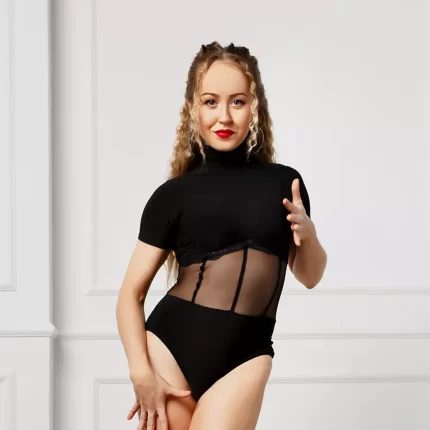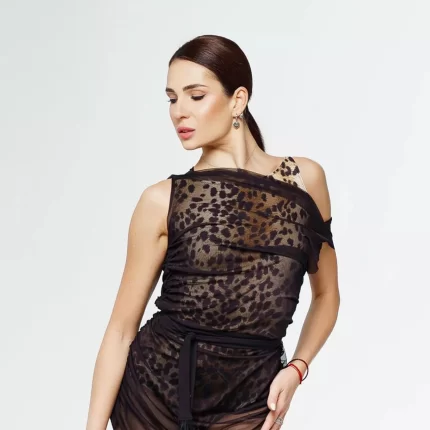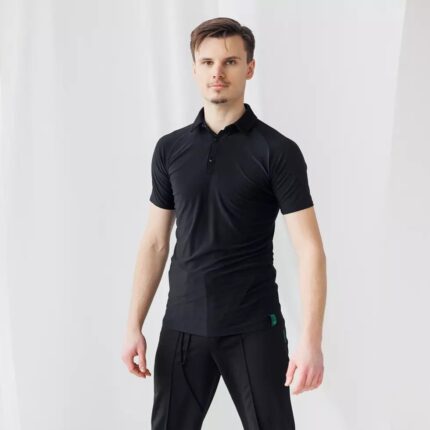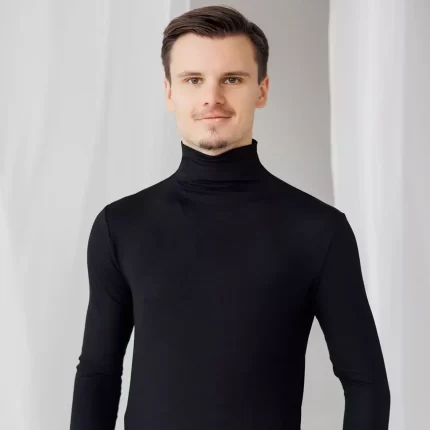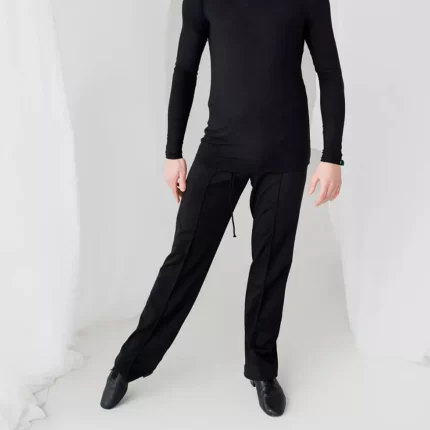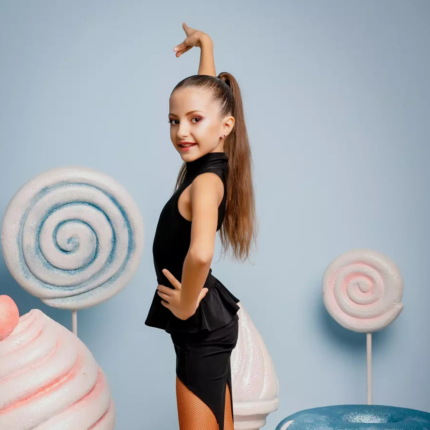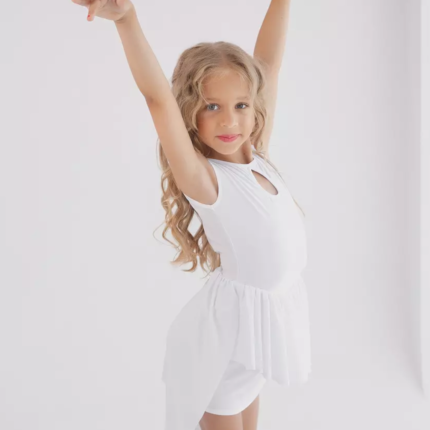Table of Contents
Introduction
Whether you’re a seasoned dancer or just starting your journey, what you wear to practice can significantly impact your performance and overall experience. Dance practice wear is more than just clothing; it’s a tool that can enhance your comfort, improve your technique, and boost your confidence. This guide explores the world of dance practice clothes, offering insights into choosing the right dancewear for practice that’s both comfortable and stylish. From breathable fabrics to supportive designs, we’ll cover everything you need to know about selecting comfortable dancewear that allows you to move freely and express yourself fully. Because when you feel good, you dance better. So, let’s dive in and discover how the right dance practice wear can help you maximize your practice sessions and elevate your dance journey!
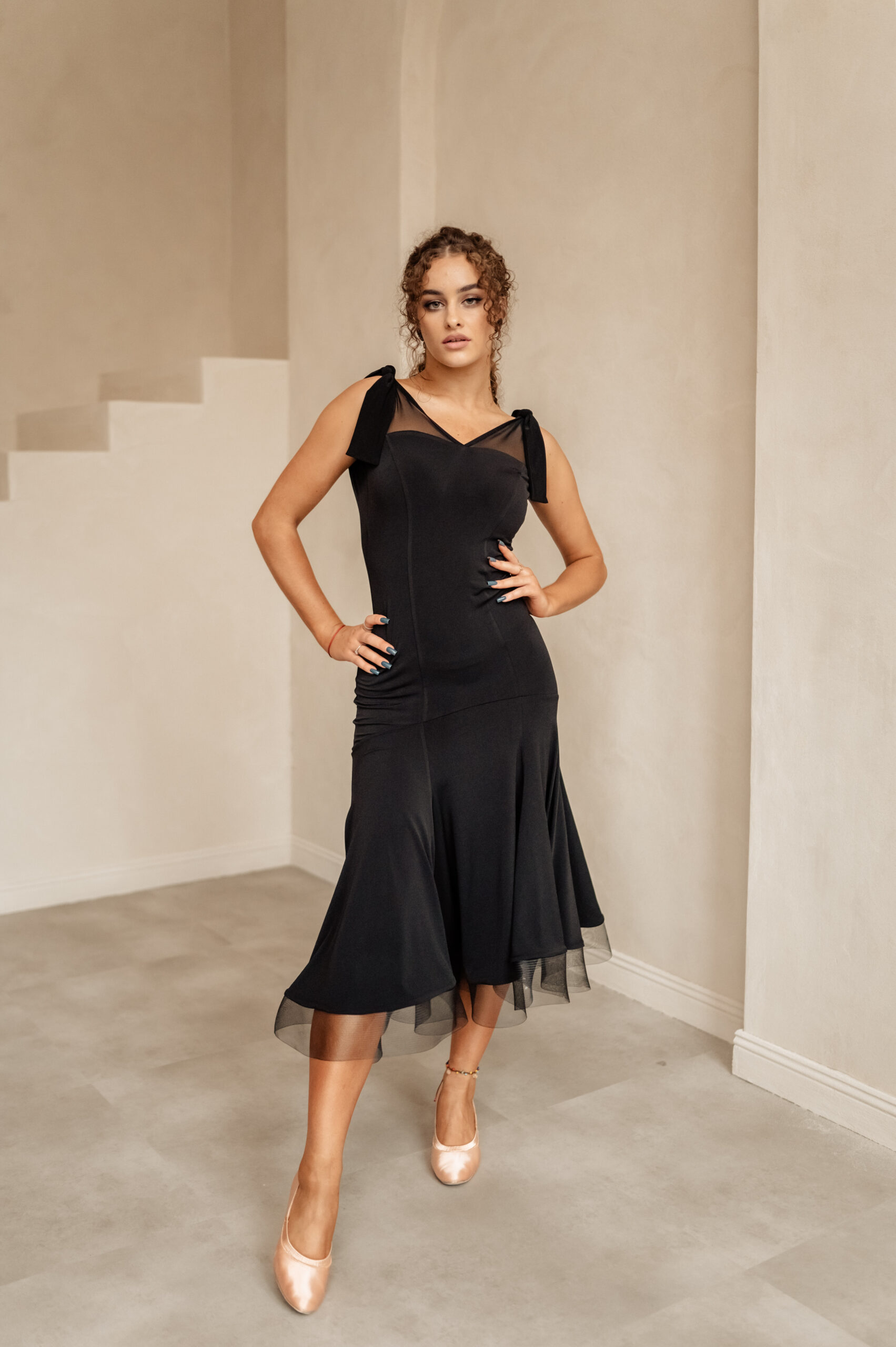
Section 1: The Importance of Proper Practice Wear
While the allure of sparkly performance costumes often steals the spotlight, the foundation of any successful dancer lies in the hours spent honing their craft during practice. And what you wear during those crucial hours can make all the difference. This section delves into the importance of proper practice wear, highlighting why it’s so much more than just something to throw on before heading to the studio. We’ll explore how comfortable dancewear that allows for freedom of movement, breathability, and support can significantly impact your training, helping you improve your technique, prevent injuries, and get the most out of every practice session. So, let’s ditch the restrictive street clothes and discover the transformative power of proper dance practice wear!
1.1 Comfort and Flexibility
When it comes to dance, freedom of movement is paramount. Every leap, turn, and stretch requires a full range of motion, unhindered by restrictive clothing. This is where comfortable dancewear comes in. The right practice wear should feel like a second skin, allowing you to move freely and express yourself fully without any limitations.
Comfortable dancewear is made from flexible dance clothes materials that stretch and move with your body. Think soft, supple fabrics like lycra, spandex, and jersey that offer a wide range of motion. These fabrics allow you to bend, stretch, and reach without feeling restricted, enabling you to execute even the most complex movements with ease and grace.
Avoiding restrictions is key to maximizing your practice sessions. Tight waistbands, stiff seams, and bulky fabrics can hinder your movements, preventing you from achieving proper form and potentially leading to injury. The right practice wear, on the other hand, will provide support without restricting your movements, allowing you to focus on your technique and get the most out of every practice. So, prioritize comfort and flexibility when choosing your dancewear, and experience the difference it makes in your dancing!
1.2 Breathability and Moisture Wicking
Dancing is a physically demanding activity that can leave you feeling hot and sweaty. That’s why breathability and moisture-wicking properties are crucial in dance practice wear. These features help regulate your body temperature, keeping you cool, dry, and comfortable throughout your practice sessions.
Breathable fabrics allow air to circulate freely, preventing overheating and allowing your skin to breathe. Look for materials like cotton, mesh, and specialized performance knits that are designed to promote airflow. These fabrics help dissipate heat and prevent the buildup of sweat, keeping you feeling fresh and comfortable even during the most intense workouts.
Moisture-wicking materials pull sweat away from your skin and transport it to the surface of the fabric, where it can evaporate quickly. This helps to keep you dry and prevents that uncomfortable, sticky feeling that can come with intense physical activity. By staying cool and dry, you can focus on your technique and get the most out of your practice without the distraction of discomfort.
Preventing overheating is essential for both your performance and your well-being. The right dance practice wear will help you stay comfortable and focused, allowing you to push your limits and achieve your dance goals. So, prioritize breathability and moisture-wicking when choosing your dancewear, and experience the difference it makes in your comfort and performance.
1.3 Support and Injury Prevention
Dance, while beautiful and expressive, can put a lot of stress on the body. That’s why choosing supportive dancewear is crucial for injury prevention and maintaining proper alignment. The right practice wear can act as an extra layer of support for your muscles and joints, helping you maintain correct form and reducing the risk of strain or injury.
Here’s how supportive dancewear helps:
- Provides extra support: Features like reinforced seams, strategically placed panels, and compression fabrics offer added support to key areas like the core, back, and joints. This helps stabilize your body during demanding movements.
- Protects your body: By minimizing stress on joints and muscles, supportive dancewear helps reduce the likelihood of developing overuse injuries. This is particularly important for dancers recovering from injuries or with pre-existing conditions.
- Promotes proper alignment: Supportive dancewear provides gentle reminders to engage your core, lengthen your spine, and maintain correct posture. This helps improve technique and reduces the risk of developing bad habits.
Proper alignment is fundamental to good dance technique and injury prevention. The right practice wear can help you achieve and maintain this alignment by providing gentle reminders to engage your core, lengthen your spine, and maintain correct posture. By promoting proper alignment, supportive dancewear can help you improve your technique and reduce the risk of developing bad habits that can lead to injury. Investing in supportive dancewear is an investment in your body and your future as a dancer.
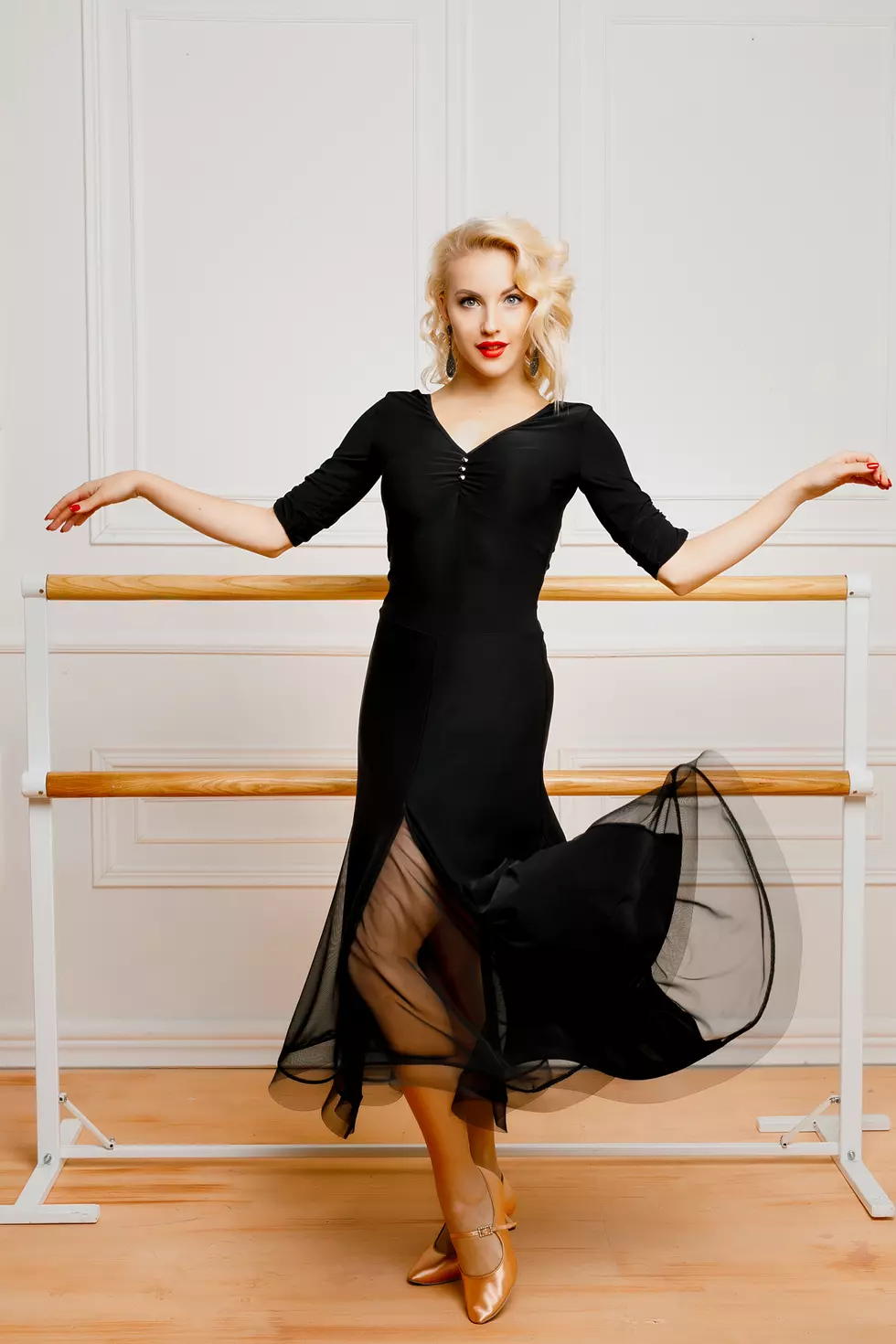
Section 2: Choosing the Right Practice Wear for Your Dance Style
Just as different dance genres have distinct movements and aesthetics, they also have unique requirements when it comes to practice wear. The flowing movements of ballet call for different attire than the sharp, staccato steps of hip-hop. This section dives into the world of dancewear, exploring the specific needs of various dance styles, including ballet, ballroom, contemporary/jazz, and hip-hop. We’ll guide you through choosing the right dance practice clothes to enhance your training, providing comfort, support, and style that’s tailored to your chosen dance form. Let’s find the perfect practice wear to complement your every move!
2.1 Ballet Practice Wear
Ballet, with its emphasis on grace, precision, and elongated lines, requires practice wear that allows for a full range of movement while providing support and a streamlined silhouette. Ballet practice wear typically consists of classic pieces that have been refined over generations of dancers.
Here’s a breakdown of essential ballet practice wear:
- Ballet leotards: The foundation of ballet attire, leotards provide a snug, supportive fit that allows instructors to see and correct a dancer’s alignment. They come in various styles, including:
- Camisole: Thin straps, ideal for warm weather.
- Tank: Wider straps for added support.
- Long-sleeved: Providing warmth and coverage.
- Halter: Offers a different style and support system.
- Ballet skirts: These add a touch of elegance and flow to movements. Popular styles include:
- Wrap skirts: Adjustable and versatile.
- Pull-on skirts: Easy to wear and often made of chiffon or mesh.
- Georgette skirts Longer, flowing skirt, often used for rehearsals.
- Ballet tights: These provide warmth, support, and a smooth line under leotards and skirts. They are typically pink or flesh-toned.
- Warm-up gear: Essential for keeping muscles warm before and after class. This category includes:
- Leg warmers: Keeping ankles and calf muscles warm.
- Knitwear: Sweaters, cardigans, and shrugs for layering.
- Unitards Full-body garment that can be worn alone or as a base layer.
When choosing ballet practice wear, prioritize comfort, fit, and freedom of movement. Look for breathable fabrics that wick away moisture and allow for a full range of motion. The right ballet practice wear will help you feel confident and supported, allowing you to focus on perfecting your technique.
2.2 Ballroom Practice Wear
Ballroom dance, with its elegant movements and close partner work, requires practice wear that is both comfortable and stylish. Ballroom practice wear should allow for a full range of motion while maintaining a polished look that reflects the sophistication of the dance style.
Here are some key elements of ballroom practice wear:
- Ballroom practice skirts: These skirts are typically longer than other dance skirts, often falling to the mid-calf or ankle. They are designed to flow beautifully with the movements of ballroom dance, creating an elegant and graceful silhouette. Popular styles include:
- A-line skirts: Flattering on all body types and offer ease of movement.
- Wrap skirts: Adjustable and allow for a customizable fit.
- Flared skirts: Provide extra volume and movement.
- Latin skirts: Some feature asymmetrical hemlines or slits for added flair for Latin style ballroom.
- Ballroom practice tops: These tops are usually fitted but not restrictive, allowing for freedom of movement in the arms and torso. They often feature elegant details like:
- V-necks or scoop necks: Elongate the neck and create a flattering silhouette.
- Three-quarter or long sleeves: Offer coverage and warmth.
- Lace or mesh accents: Add a touch of sophistication.
- Comfortable ballroom attire: The focus is on clothing that allows you to move freely and comfortably for extended periods. This includes:
- Breathable fabrics: Look for materials like jersey, lycra, or mesh that allow your skin to breathe.
- Stretch fabrics: Ensure your clothing moves with you, not against you.
- Proper fit: Avoid anything too tight or too loose that could restrict movement or be distracting.
When choosing ballroom practice wear, prioritize comfort and elegance. Look for pieces that allow you to move freely while maintaining a polished look. The right practice wear will help you feel confident and graceful, allowing you to focus on mastering the intricacies of ballroom dance.
2.3 Contemporary/Jazz Practice Wear
Contemporary and jazz dance, with their dynamic movements, expressive styles, and often athletic choreography, require practice wear that is versatile, comfortable, and allows for a wide range of motion. Contemporary/Jazz practice wear often blends elements of ballet attire with more modern styles, creating a look that is both functional and fashionable.
Here are some essential elements of contemporary and jazz practice wear:
- Jazz pants: These are a staple of jazz dance, offering both comfort and flexibility. Popular styles include:
- Bootcut: Flattering on most body types and offer a streamlined look.
- Flare: Provide extra room for movement and create a dynamic silhouette.
- Capri: Cropped length, ideal for warmer weather or for showcasing footwork.
- Dance tops: A variety of tops are suitable for contemporary and jazz, including:
- Fitted tank tops: Allow for a full range of arm movement and are often made from breathable, moisture-wicking fabrics.
- T-shirts: A comfortable and versatile option, choose fitted or loose-fitting depending on your preference.
- Crop tops: Popular for their stylish look and breathability.
- Leotards: Similar to ballet leotards, these provide a supportive and streamlined base layer. They can be worn alone or layered under other tops or pants.
- Versatile dancewear: Many dancers opt for pieces that can be mixed and matched to create different looks. This might include:
- Leggings: Comfortable and supportive, they can be paired with a variety of tops.
- Unitards: Offer full-body coverage and a streamlined look.
When choosing contemporary/jazz practice wear, prioritize comfort, flexibility, and versatility. Look for pieces that allow you to move freely and express yourself fully. The right practice wear will help you feel confident and supported, allowing you to focus on pushing your creative boundaries.
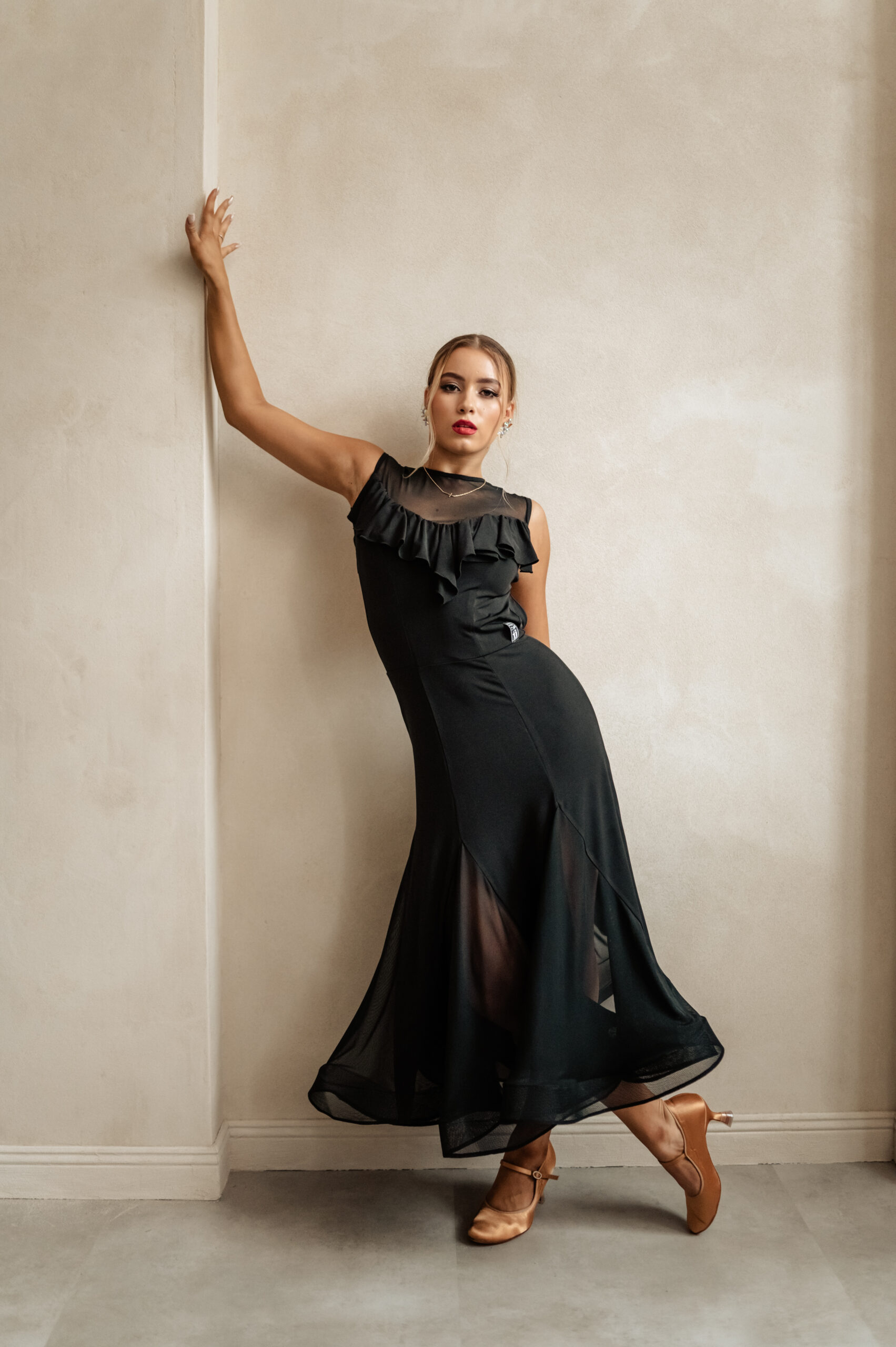
Section 3: Essential Practice Wear Items
Now that we’ve explored the specific needs of various dance styles, let’s delve into the essential dance practice wear items that form the foundation of any dancer’s wardrobe. This section breaks down the key garments, from leotards and unitards to tops, bottoms, skirts, and dresses. We’ll discuss the different styles, fits, and fabrics to consider, helping you build a collection of dance practice clothes that are both functional and stylish. Get ready to discover the must-have pieces that will keep you comfortable, supported, and ready to move!
3.1 Leotards and Unitards
Leotards and unitards are fundamental garments in many dance genres, providing a streamlined, supportive base layer that allows for a full range of movement. They are the foundation upon which many dance outfits are built, offering both practicality and a clean aesthetic.
Leotards are essentially a one-piece garment that covers the torso, often with varying sleeve lengths and neckline styles. They provide a snug fit that allows instructors to clearly see a dancer’s body alignment and make corrections. This is particularly important in styles like ballet, where precise posture and form are crucial. Leotards come in a wide array of styles:
- Sleeveless: Camisole or tank styles, offering maximum freedom of movement for the arms.
- Short-sleeved: Providing a bit more coverage while still allowing for breathability.
- Long-sleeved: Ideal for cooler temperatures or for dancers who prefer more coverage.
- Different necklines: From scoop necks and V-necks to higher necklines or even mock turtlenecks, there’s a style to suit every preference.
Unitards are similar to leotards but extend to cover the entire body, typically down to the ankles or feet. They offer a streamlined, all-in-one solution that’s particularly popular in contemporary, jazz, and acrobatic dance. Unitards provide a sleek silhouette and eliminate the need for separate tops and bottoms, making them a convenient and comfortable choice for many dancers.
When choosing dance leotards or unitards, consider the following:
- Fit: It should be snug but not restrictive, allowing for a full range of motion.
- Fabric: Look for breathable, moisture-wicking materials that provide support and flexibility.
- Style: Choose a style that suits your personal preference and the requirements of your dance genre.
Whether you prefer a classic black leotard or a vibrant, patterned unitard, these essential garments provide the foundation for a comfortable and functional dance practice wardrobe.
3.2 Tops and T-Shirts
While leotards and unitards provide a great foundation, dance tops and breathable t-shirts offer versatility and layering options for various dance styles and weather conditions. The right top can keep you comfortable, wick away moisture, and allow you to express your personal style during practice.
When choosing dance tops, consider the following factors:
- Fit: Depending on the dance style, you might prefer a fitted, loose, or cropped top. Fitted tops offer a streamlined look and are ideal for styles like ballet and jazz, while looser tops can be more comfortable for hip-hop or contemporary. Cropped tops are a popular choice for many dancers, offering breathability and a stylish look.
- Fabric:Moisture-wicking fabrics are essential for keeping you cool and dry during practice. Look for materials like:
- Performance knits: Specifically designed for athletic wear, these fabrics often blend synthetic fibers like nylon, polyester, and spandex for optimal moisture management and stretch.
- Mesh: Offers excellent ventilation and breathability.
- Cotton blends: While 100% cotton can retain moisture, blends with synthetic fibers can improve its wicking properties.
- Style: From classic tank tops and t-shirts to more elaborate designs with cutouts, mesh panels, or unique necklines, there’s a dance top to suit every taste.
Here are some popular styles of dance tops:
- Tank tops: A versatile choice for most dance styles, offering freedom of movement for the arms.
- T-shirts: Can be fitted or loose, providing more coverage than tank tops.
- Crop tops: Offer breathability and a stylish look, often paired with high-waisted leggings or pants.
- Wrap tops: Popular in ballet and contemporary, these tops can be adjusted for a customized fit.
Choosing the right dance tops and breathable t-shirts is essential for staying comfortable and confident during practice. Experiment with different styles and fabrics to find what works best for you and your chosen dance style.
3.3 Pants and Leggings
From flowing jazz pants to supportive leggings, the right dance pants or leggings are essential for comfort, flexibility, and style during practice. Choosing the right bottoms depends on your dance style, personal preference, and the level of support you need.
Here’s a breakdown of popular options:
- Leggings: A staple in many dance genres, leggings offer a snug, supportive fit that allows for a full range of motion. They are often made from moisture-wicking fabrics like:
- Nylon/Spandex blends: Provide excellent stretch and support.
- Polyester/Spandex blends: Offer durability and moisture-wicking properties.
- Leggings come in various different lengths and styles, including:
- Full-length: Provide coverage down to the ankle.
- Capri: Cropped at the mid-calf, ideal for warmer weather.
- High-waisted: Offer extra support and coverage around the midsection.
- Mesh-paneled: Add breathability and a stylish touch.
- Jazz pants: These are typically looser than leggings, offering a more relaxed fit and a wider range of motion. They often feature:
- Bootcut or flared legs: Create a flowing silhouette.
- Fold-over waistbands: Provide comfort and adjustability.
- Dance shorts: Ideal for warmer weather or for styles like contemporary and hip hop. They come in various styles, including:
- Boy shorts
- Bike shorts
- Loose-fitting running-style shorts
- Sweatpants and joggers: Popular for hip-hop and other street styles, these offer comfort and a relaxed aesthetic.
When choosing dance pants or leggings, consider the following:
- Fit: Should be snug but not restrictive, allowing for a full range of motion.
- Fabric: Look for breathable, moisture-wicking materials that provide support and flexibility.
- Style: Choose a style that suits your personal preference and the requirements of your dance genre.
The right comfortable bottoms will keep you feeling confident and supported throughout your practice, allowing you to focus on your technique and express yourself fully.
3.4 Skirts and Dresses
While pants and leggings are staples in many dance wardrobes, practice skirts and dance dresses offer a touch of elegance and flow, adding another dimension to your movement and style. They can be particularly appealing for ballet, ballroom, and lyrical dance, enhancing the fluidity and grace of your movements.
Here are some things to consider when choosing practice skirts and dance dresses:
- Skirts:
- Ballet skirts: Often made of chiffon or mesh, these skirts are typically short and lightweight, adding a delicate flow to movements. They come in wrap and pull-on styles.
- Ballroom skirts: Usually longer (mid-calf or ankle-length) and made from fabrics that drape beautifully, like jersey or georgette. They are designed to enhance the sweeping movements of ballroom dances.
- Character skirts: Used in various dance styles for specific character roles, often featuring fuller skirts with multiple layers of fabric, like a peasant skirt.
- Dresses:
- Leotard dresses: Combine a leotard with an attached skirt, offering a convenient all-in-one option.
- Practice dresses: Come in various styles and lengths, often made from comfortable, stretchy fabrics. They can range from simple and streamlined to more elaborate designs with flowing skirts or asymmetrical hemlines.
When choosing skirts or dresses for dance practice, keep in mind:
- Length: Consider the style of dance and your personal preference. Shorter skirts offer more freedom of movement for the legs, while longer skirts can add elegance and drama.
- Fabric: Choose lightweight, breathable fabrics that flow well and allow for a full range of motion.
- Fit: The bodice or top portion should fit snugly, while the skirt should allow for unrestricted movement.
Adding flow and movement, skirts and dresses can enhance the visual appeal of your dancing, particularly in styles that emphasize fluidity and grace. They offer a different aesthetic and feel than pants or leggings, providing another option for expressing your personal style during practice.
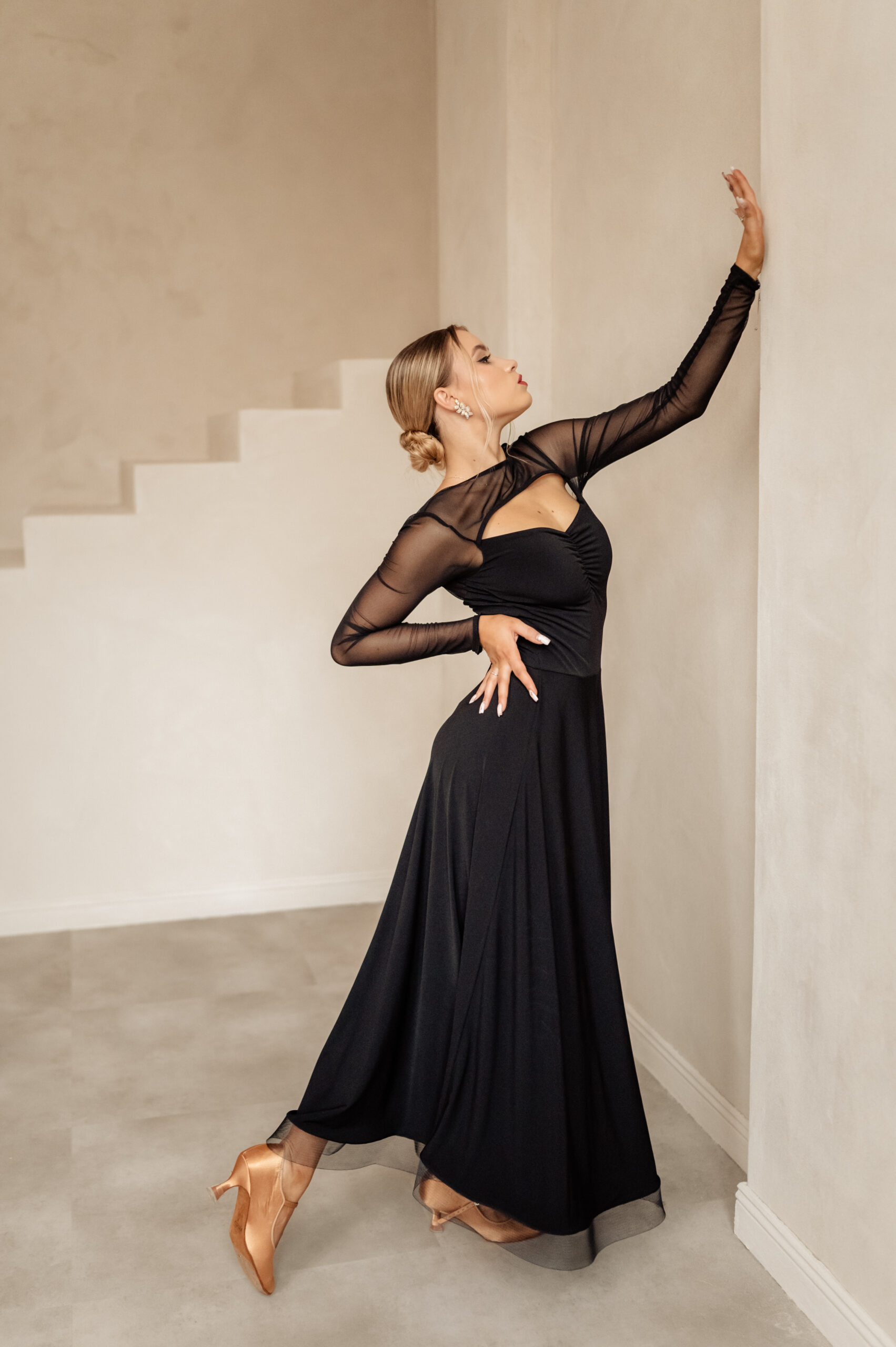
Section 4: Accessorizing Your Practice Wear
The right accessories can enhance both the functionality and style of your dance practice wear. From ensuring your shoes provide the proper support to keeping your hair neatly out of your face, these often-overlooked details can make a significant difference in your comfort and focus during practice. This section explores the essential accessories that complete your dance ensemble, including shoes, hair accessories, bags, and other essentials. Let’s discover how these finishing touches can optimize your practice experience!
4.1 Shoes and Footwear
Proper dance shoes are crucial for providing support, preventing injuries, and allowing you to execute movements correctly. Unlike regular street shoes, practice shoes are specifically designed to meet the unique demands of dance, offering the right balance of flexibility, cushioning, and grip.
Here’s a look at the importance of dance shoes:
- Support: Dance shoes provide crucial support for your feet and ankles, helping to prevent injuries like sprains, strains, and stress fractures. They often feature reinforced arches, cushioned insoles, and supportive heel counters.
- Flexibility: Dance shoes are designed to be flexible, allowing for a full range of motion in your feet and ankles. This is essential for executing intricate footwork and achieving proper technique.
- Grip: The soles of dance shoes are designed to provide the right amount of grip on the dance floor, preventing slips and falls while still allowing for smooth turns and glides.
- Dance Specific Design: Different dance genres require different types of shoes. For example:
- Ballet shoes: Soft, flexible shoes made of leather or canvas that allow dancers to point and flex their feet.
- Jazz shoes: Often feature a split sole for maximum flexibility and may be slip-on or lace-up.
- Ballroom shoes: Typically have suede soles for smooth gliding and specific heel heights depending on whether they are for standard or Latin style dances.
- Tap shoes: Feature metal taps on the heels and toes to create rhythmic sounds.
- Hip-hop sneakers: Offer more support and cushioning than other dance shoes, often resembling stylish streetwear sneakers but with features designed for dance.
Supporting your feet with the right shoes is an investment in your dance training and overall well-being. Choosing the correct practice shoes for your dance style is crucial for preventing injuries, improving technique, and maximizing your performance. Don’t underestimate the importance of proper footwear – it’s the foundation of every great dancer!
4.2 Hair Accessories
While seemingly minor, hair accessories play a significant role in a dancer’s practice routine. Keeping hair out of your face is not just about maintaining a neat appearance; it’s about ensuring clear vision and preventing distractions during practice. The right hair accessories can help you stay focused on your technique and movements without constantly readjusting your hair.
Here are some popular and practical hair accessories for dancers:
- Hair ties: Essential for securing ponytails and braids. Choose strong, snag-free elastics that won’t damage your hair. Consider these types:
- Spiral hair ties: These are designed to minimize dents and breakage.
- Fabric-covered elastics: Gentle on the hair and offer a secure hold.
- Headbands: Ideal for keeping shorter hair and flyaways away from the face. Look for headbands that are:
- Moisture-wicking: To absorb sweat and keep you comfortable.
- Non-slip: To ensure they stay in place during movement.
- Stylish: Choose colors and patterns that complement your practice wear.
- Hairpins and bobby pins: Essential for securing buns, updos, and stray hairs.
- U-shaped hairpins: Best for securing buns and larger sections of hair.
- Bobby pins: Ideal for pinning down smaller sections and flyaways.
- Claw clips: Useful for quickly pulling hair up and out of the way.
Keeping hair out of your face allows you to maintain focus, see clearly, and execute movements without distraction. Experiment with different hair accessories to find what works best for your hair type and dance style. A simple ponytail, a sleek bun, or a stylish headband can make a big difference in your comfort and concentration during practice.
4.3 Bags and Other Essentials
Staying organized and prepared for dance practice is easy with the right dance bags and essential items. A well-stocked dance bag ensures you have everything you need for a successful and comfortable practice session, from extra hair ties to a refreshing water bottle.
Here are some essential items to consider:
- Dance bags: Choose a bag that’s spacious enough to carry all your essentials, including:
- Shoes: Keep your dance shoes separate from your other belongings in a designated compartment or shoe bag.
- Practice wear: Pack a change of clothes, including extra leotards, tights, or other practice wear.
- Water bottle: Staying hydrated is crucial for maintaining energy levels and preventing muscle cramps. Choose a reusable bottle.
- Towel: A small, absorbent towel is essential for wiping away sweat.
- Snacks: Pack healthy snacks like fruit, nuts, or energy bars for sustained energy.
- First-aid kit: Include band-aids, pain relievers, and any necessary personal medications.
- Other essentials:
- Hair ties, hairpins, and headbands: Always have extras on hand.
- Deodorant: Stay fresh and confident throughout practice.
- Warm-up gear: Leg warmers, sweaters, or a small blanket for keeping warm before, during, and after practice.
- Notebook and pen: For taking notes during class or jotting down choreography.
Staying organized with a well-stocked dance bag can save you time and stress, allowing you to focus on your practice. It also helps ensure you have everything you need to stay comfortable, hydrated, and prepared for any situation.
Section 5: Caring for Your Dance Practice Wear
You’ve invested in quality dance practice wear to enhance your training and performance. Now, it’s time to learn how to properly care for these essential items to ensure their longevity and maintain their performance. This section provides a guide to caring for your dance practice clothes, covering everything from washing and drying to storage and organization. By following these simple tips, you can extend the life of your dancewear, keeping it looking and performing its best for countless practices to come.
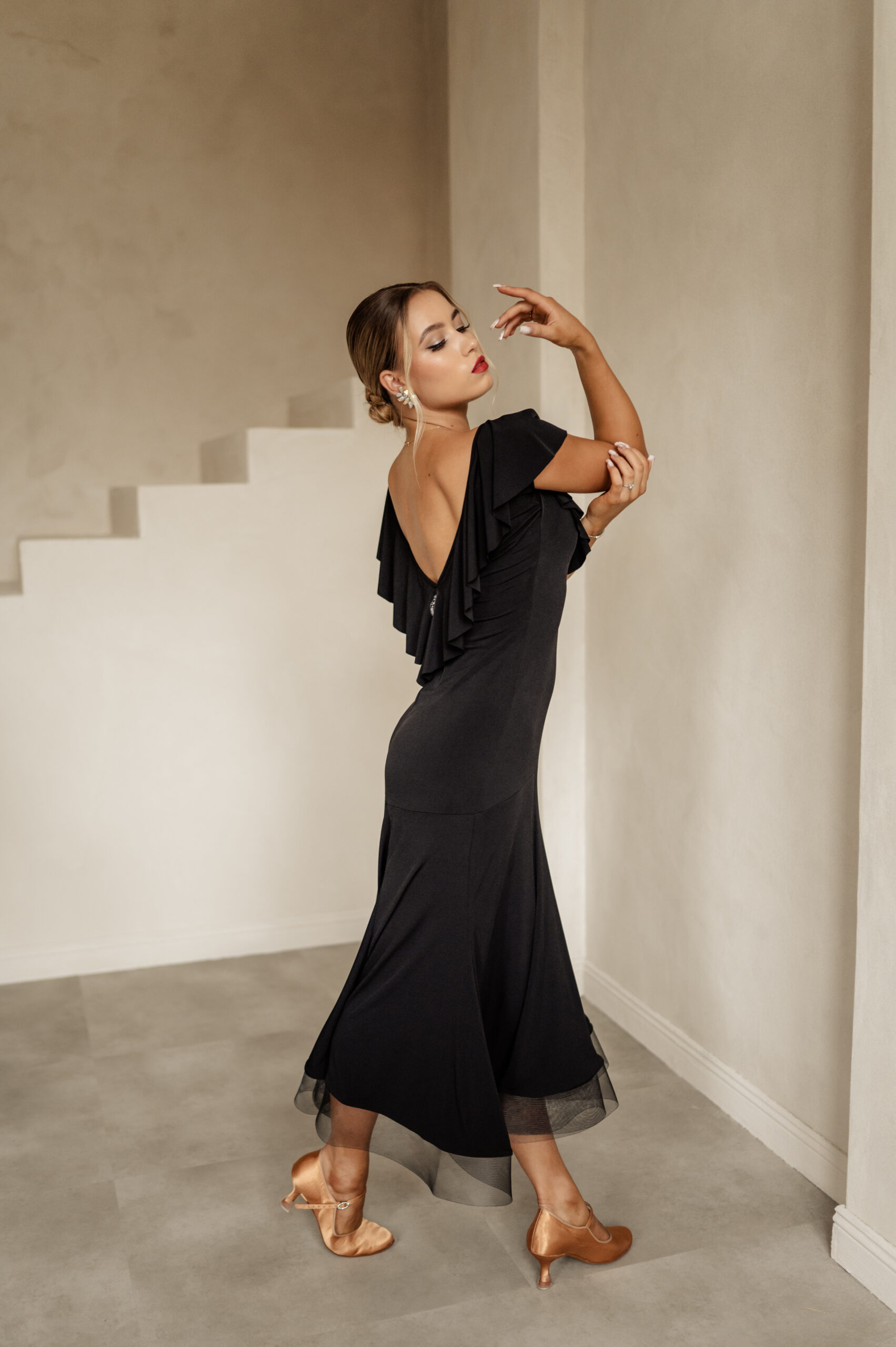
5.1 Washing and Drying
Proper washing and drying techniques are crucial for maintaining the quality and extending the life of your dance practice wear. Incorrect care can lead to shrinkage, fading, loss of elasticity, and damage to delicate fabrics.
Here’s a guide to washing and drying your dancewear:
- Read the care label: Always check the care label on each garment for specific instructions. Different fabrics and embellishments may require different care.
- Washing:
- Hand washing: This is often the gentlest method, especially for delicate items like leotards with embellishments or mesh details. Use cold water and a mild detergent.
- Machine washing: If machine washing is recommended, use a gentle cycle with cold water and a mild detergent. Place delicate items in a mesh laundry bag to prevent snagging.
- Separate colors: Wash dark colors separately from light colors to prevent color bleeding.
- Avoid bleach and fabric softener: These can damage the fibers and elasticity of your dancewear.
- Drying:
- Air drying: This is the best method for most dancewear, as it prevents shrinkage and damage from heat. Lay flat to dry on a clean towel or hang to dry, avoiding direct sunlight.
- Tumble drying: If the care label allows for tumble drying, use a low heat setting and remove promptly to prevent wrinkles.
Preventing damage to your dancewear during washing and drying is essential for maintaining its shape, elasticity, and overall appearance. By following these proper care instructions, you can ensure that your dance practice wear stays in top condition, ready for your next practice session.
5.2 Storage and Organization
Proper storing and organization of your dance practice wear are just as important as washing and drying them correctly. Good storage habits will not only keep your dancewear in good condition but also save you time and make it easier to find what you need for each practice.
Here are some tips for storing and organizing your dancewear:
- Folding vs. Hanging:
- Leotards and unitards: Fold neatly to prevent stretching or distortion.
- Tops and t-shirts: Can be folded or hung, depending on your preference.
- Pants and leggings: Fold neatly or hang by the waistband to prevent wrinkles.
- Skirts and dresses: Hang to prevent wrinkles and maintain their shape. Use padded hangers for delicate fabrics.
- Ballroom gowns or longer dresses: Use a garment bag that is long enough to accommodate the whole dress without it bunching at the bottom.
- Storage Solutions:
- Drawers: Use drawer dividers to separate different types of garments.
- Shelves: Store folded items on shelves, grouping similar items together.
- Hanging organizers: Utilize hanging organizers with compartments for shoes, accessories, or smaller items.
- Garment bags: Protect special occasion or delicate dancewear from dust and damage.
- Preventing wrinkles: Avoid over-stuffing drawers or closets. Ensure items are completely dry before storing to prevent mildew and odors.
- Organization Tips:
- Sort by type: Keep leotards, tops, bottoms, and accessories in separate sections.
- Color-coding: Organize items by color for easy identification.
- Labeling: Use labels for drawers, shelves, or bins to quickly locate specific items.
By keeping it organized and following these storage tips, you can extend the life of your dance practice wear and simplify your pre-practice routine. A well-organized dance wardrobe ensures you can always find what you need, leaving you more time to focus on what matters most: your dancing!
Conclusion
Investing in quality dance practice wear is an investment in your comfort, performance, and overall dance experience. By choosing the right fabrics, styles, and fits for your specific dance genre and body type, you can enhance your training, prevent injuries, and feel confident and supported during every practice. From the supportive embrace of a leotard to the flowing grace of a practice skirt, each garment plays a role in helping you achieve your dance goals.
Remember to care for your dance practice clothes with proper washing, drying, and storage techniques to ensure their longevity and maintain their performance. By treating your dancewear with the same care and attention you give your technique, you’ll be rewarded with a wardrobe that’s ready to support you through countless hours of practice and performance.
At Fashion Dance, we understand the importance of having high-quality, stylish, and comfortable dance practice wear. We offer a wide selection of apparel designed to meet the needs of dancers of all styles and levels. We’re committed to providing dancers with the perfect combination of comfort and style for every move, allowing you to express yourself fully and embrace the joy of dance. So, step into the studio with confidence, knowing you’re well-equipped to take on any challenge and shine, with Fashion Dance as your partner in style!
How often should I replace my dance practice wear?
The lifespan of your dance practice wear depends on several factors, including the frequency of use, the intensity of your training, the quality of the garments, and how well you care for them. Generally, you should consider replacing your dance practice wear when you notice signs of wear and tear that affect its performance or comfort. This could include loss of elasticity, thinning fabric, holes or tears, pilling, fading or discoloration, stretched-out straps or waistbands, and lingering odors that don’t wash out.
As a general guideline, leotards and tights tend to wear out faster than other items due to their close fit and frequent washing. You might need to replace them every 6-12 months, depending on how often you dance. Dance pants, leggings, and tops may last longer, potentially 1-2 years or more with proper care. Dance shoes have a varying lifespan depending on the style and intensity of use. Ballet slippers might need replacing every few months, while jazz or ballroom shoes could last longer.
Ultimately, the best way to determine when to replace your dance practice wear is to pay attention to its condition and how it feels during practice. If you notice any signs of wear that compromise the fit, support, or comfort of the garment, it’s probably time to replace it. Investing in new dance practice wear when needed ensures that you’re always practicing in garments that are safe, supportive, and allow you to perform at your best.
What are some tips for staying warm during dance practice in colder weather?
Staying warm during dance practice in colder weather is crucial for preventing injuries and maintaining muscle flexibility. Layering is key to staying warm in cold weather. Start with a snug-fitting base layer made of moisture-wicking fabric. This will help to keep you dry and comfortable as you sweat. Add a long-sleeved top or a light jacket over your base layer. Choose fabrics that are breathable and allow for a full range of motion. You can remove layers as you warm up.
Leg warmers are a dancer’s best friend in cold weather. They help to keep your leg muscles warm and flexible, which is essential for preventing injuries. You can also wear arm warmers. Wear thicker tights or leggings in colder weather. You can layer a pair of ballet tights under your leggings for extra warmth. Consider a warm-up suit made of fleece or other warm material to wear before and after practice, or even during breaks.
Don’t forget your extremities. Wear a hat or headband to keep your head warm, and consider wearing gloves or mittens if your hands tend to get cold. Choose shoes that provide adequate coverage and warmth. You might opt for jazz shoes or sneakers instead of ballet slippers in very cold weather.
Make sure to warm up thoroughly before starting your dance practice. Dynamic stretches and light cardio can help to increase blood flow and prepare your muscles for movement. Take breaks as needed to prevent overheating and allow your body to recover. Drink plenty of water, even in cold weather, to stay hydrated. After practice, cool down gradually and change out of any damp clothing as soon as possible to avoid getting chilled.
By following these tips, you can stay warm and comfortable during dance practice in colder weather, allowing you to focus on your technique and enjoy your time in the studio.
How can I transition my dance practice wear from the studio to the street?
Transitioning your dance practice wear from the studio to the street can be both stylish and practical. The key is to choose versatile pieces and layer them with everyday clothing items. Start with your dance foundation. A simple, solid-colored leotard or a fitted tank top can easily be paired with non-dance bottoms.
Layer a stylish jacket over your leotard or dance top. A denim jacket, a bomber jacket, or a cardigan can instantly transform your look from studio to street. Pair your dance leggings or jazz pants with an oversized sweater or a tunic for a comfortable and chic look. You can also wear a flowy skirt over your leotard or dance shorts for a more feminine style.
Footwear is key to transitioning your look. Swap out your dance shoes for stylish sneakers, boots, or sandals, depending on the weather and your personal style. Accessorize to complete your look. A scarf, a hat, or some statement jewelry can add a touch of personality and style.
Choose the right fabrics. Opt for dancewear made from fabrics that are both functional and fashionable, such as performance knits, mesh, or even modal or bamboo blends. Consider color and print. While bright colors and bold prints are great for the studio, you might prefer more neutral tones or subtle patterns for everyday wear.
Adapt to the season. In warmer weather, you can wear your dance shorts or skirts with a simple t-shirt or tank top. In colder weather, layer your dancewear with tights, sweaters, and jackets. Be mindful of the occasion. While some dancewear pieces can easily transition to casual streetwear, others might be too revealing or sporty for certain settings.
By following these tips, you can create stylish and comfortable outfits that seamlessly transition from dance practice to your everyday activities, allowing you to incorporate your passion for dance into your personal style.
What are some common dancewear fabrics, and how do I choose the right one for my needs?
Dancewear fabrics are designed to provide comfort, support, and flexibility during movement. Here are some of the most common materials used in dance practice wear:
Cotton: A natural fiber that’s soft, breathable, and comfortable against the skin. It’s often used in leotards, t-shirts, and warm-up wear. However, cotton tends to absorb moisture and can become heavy when wet, so it’s often blended with other fibers to improve its performance.
Lycra/Spandex: Known for its exceptional elasticity, Lycra or Spandex provides a snug, supportive fit that moves with your body. It’s often blended with other fibers to create fabrics that offer both stretch and shape retention. This is a common component of most dancewear, especially for form fitting garments like leotards and tights.
Nylon: A strong, durable synthetic fiber that’s often used in dancewear for its resistance to abrasion and moisture-wicking properties. It’s frequently blended with Lycra/Spandex to create fabrics that are both supportive and quick-drying.
Polyester: Another synthetic fiber known for its durability, wrinkle resistance, and color retention. It’s often used in performance fabrics for its moisture-wicking and quick-drying properties.
Mesh: A knitted or woven fabric with an open, net-like structure, providing excellent ventilation and breathability. It’s often used as an accent or overlay in dancewear to add style and enhance airflow.
Jersey: A soft, stretchy knit fabric that drapes well and offers excellent comfort and flexibility. It can be made from various fibers, including cotton, rayon, or synthetic blends.
Rayon/Modal/Bamboo: These are all semi-synthetic fibers made from plant-based materials. They are known for their softness, breathability, and draping qualities. They are often used as alternatives to silk or cotton and can be blended with other fibers for enhanced performance.
When choosing a dancewear fabric, consider the following:
Moisture-wicking: Look for fabrics that pull sweat away from your skin, keeping you dry and comfortable. This is especially important for high-intensity dance styles.
Breathability: Choose fabrics that allow for good air circulation, preventing overheating.
Stretch and recovery: Make sure the fabric offers enough stretch to allow for a full range of motion but also recovers its shape well.
Support: Consider the level of support you need. Some fabrics, like nylon/spandex blends, offer more compression and support than others.
Durability: Dancewear can take a beating, so choose fabrics that are resistant to abrasion, pilling, and fading.
Comfort: Ultimately, the fabric should feel good against your skin and allow you to move freely without any irritation.
By understanding the properties of different dancewear fabrics, you can choose the right materials for your specific needs and preferences, ensuring that your practice wear is both functional and comfortable.
